4 European Events Harmonizing Art, Nature, and Techno Music
Techno and electronic music have always shared an intimate relationship with art, intertwining rhythms, beats, and melodies with visual expressions...
Celia Leiva Otto 30 May 2024
In 2016, The Collins English Dictionary named “hygge” the runner-up word of the year. Since then, at least 20 books have been published on the subject, not to mention games and coloring books. But, what is the art of hygge (pronounced “hoo-guh”), and how do you get it?
Hygge comes from a Norwegian word meaning “well-being.” It appeared in written Danish for the first time in the early 1800s, but it does not appear in written English until the 1960s. Hygge is the feeling of coziness and contentment that simple comforts evoke, such as being wrapped in a blanket, having good conversations, enjoying food, etc. When looking in a thesaurus, however, there are no synonyms or antonyms! Hygge is its very own concept, and it may be a key component in the idea of Danish happiness.
Meik Wiking, the CEO of The Happiness Research Institute in Copenhagen, Denmark, published The Little Book of Hygge in 2016. In the book, Wiking offers The Hygge Manifesto, with ten elements sure to help foster feelings of happiness. Winter, with its coldness and gray skies, sometimes can bring on wistfulness and sadness. This winter, in particular, might look very different for most of us. It is worth revisiting The Hygge Manifesto for some simple ideas to help boost our well-being. As always, artists, with their keen sense of observation, have left us with some of their own ideas on how we might do this.
The art of being happy lies in the power of extracting happiness from common things.
Henry Ward Beecher
It refers to making all environments cozy and inviting through soft lighting, candles, and perhaps even a fireplace.
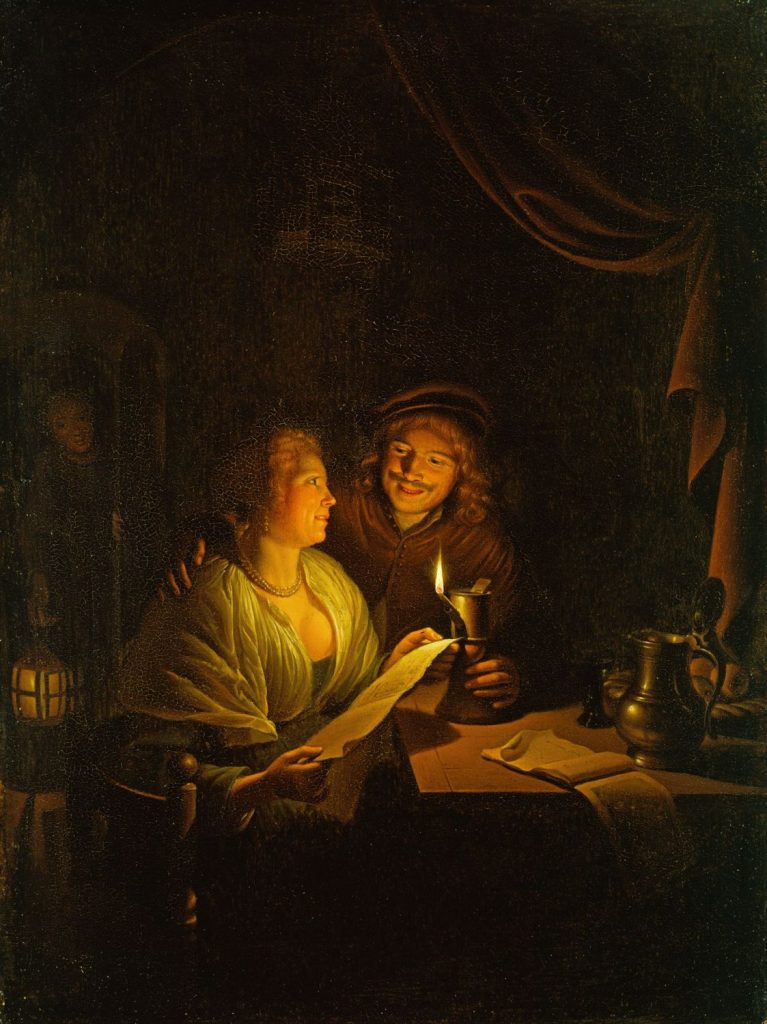
Gerrit Dou’s painting invites us into a cozy, hyggelig scene—dim light, soft fabrics, books, food, people we love to spend time with. Dou was Rembrandt’s first pupil, and very admired in his own day. He absorbed all the master’s principles regarding the portrayal of light while adding his own take, since he often included the light source itself. Here, he gives us the perfect ambiance for a cozy night at home.
Mindfulness is a big component of hygge. It refers to being fully in the moment. And, for that, it is necessary to turn off devices and focus on the activity at hand, as well as on the people sharing that moment with you.
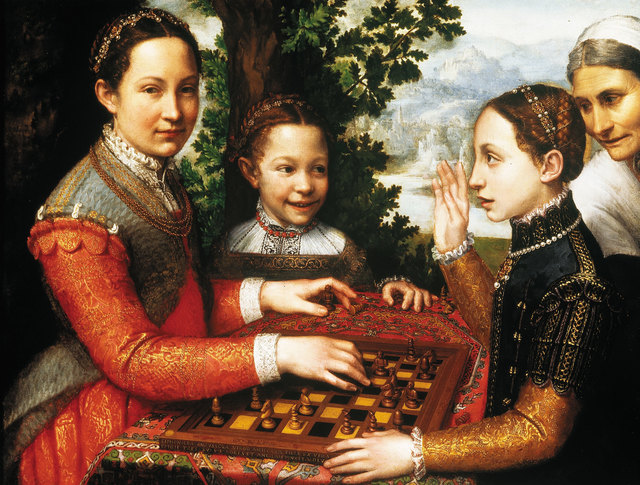





In this delightful painting, Sofonisba Anguissola portrays the meaning of presence. During the 16th century, women were not encouraged to become artists in the professional sense. At first, the purpose of Anguissola’s training would have been to help her become a better wife and mother, not to compete for commissions with male artists. Since she was a woman, she could not study anatomy or draw from life, because it was not acceptable at the time for women to view nudes. Without this technical knowledge, she knew she could not paint the complex multi-figure or religious scenes typical of her day. But, this did not stop Anguissola, who began experimenting with a new style of portraiture, where she posed her subjects informally and in everyday settings.
Anguissola painted The Chess Game when she was 23 years old. In the painting, we see her sisters Lucia, Minerva, and Europa, enjoying a moment of fun. This was quite revolutionary for the time when subjects were usually portrayed in very formal or allegorical settings. This painting is an early example of what is now called a conversation piece, or an informal portrait of a group engaged in an activity together—the very soul of hygge!
There’s a reason why “comfort food” got its name… Certain meals just evoke that sensation of warmth, coziness, and home. So, take time to enjoy the foods you love!
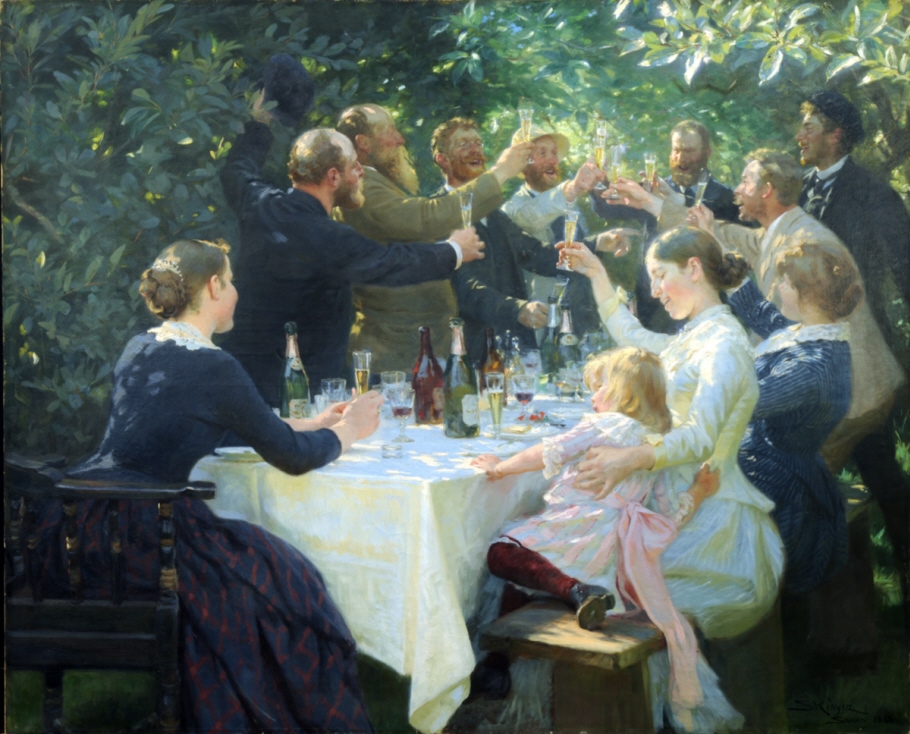





In this group portrait, Krøyer gives us an idyllic snapshot of life among the artists from the Skagen Colony. This group of painters gathered together because they rejected the strictures of the Academy of Fine Arts in Copenhagen. Instead, they tried to depict everyday life in the style of the Realist, Naturalist, and Impressionist movements.
Krøyer’s painting looks so very spontaneous and natural to us, but, it actually took him four years to complete in full. He got the idea from a photograph of a dinner party he attended at Michael and Anna Anchers’ home, who were also painters at Skagen. Krøyer had to track down the people he wished to be in his painting, and sketch them separately. He then had fellow painter Oscar Björck sketch him for his own self-portrait! The result, however, is a painting full of light, liveliness, and camaraderie.
Teamwork makes the dream work! Sharing tasks and being community-minded is a big part of hygge.
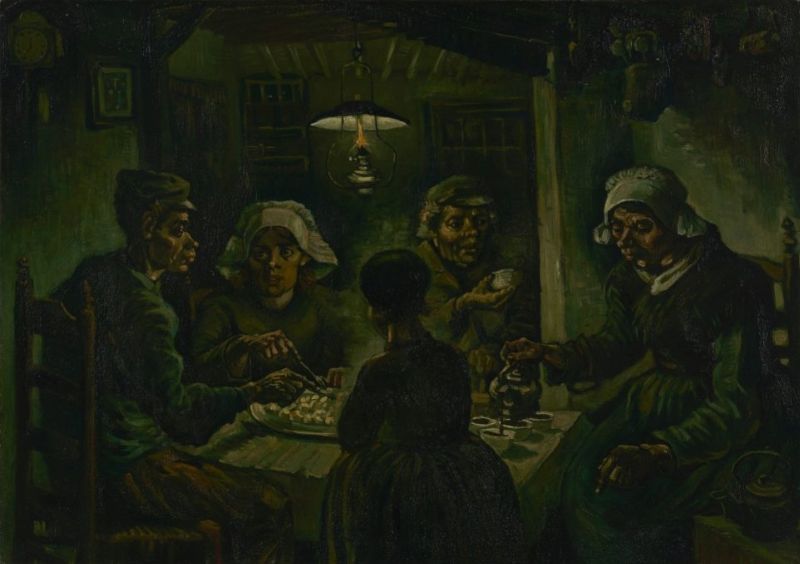





Van Gogh painted at least 40 studies of peasants’ heads, plus some two dozen close-up studies of cottages, before completing The Potato Eaters. He portrayed the realities of these people’s lives through their physical aspects, the dark color palette, and the gloom created by the one source of light in the room. Yet, one of the more moving aspects of the work is not actually what we see in the painting itself, but what we feel while looking at the figures. To be able to enjoy this meal—how many hours of work did these farmers have to put in? To have those potatoes on the table, they had to work together and rely on each other through good times and bad. That’s what makes a community.
In her best-seller book, The Happiness Project, Gretchen Rubin talks about the benefits of gratitude for living a happy life. It turns out that scientists, philosophers, and religious leaders all agree that gratitude is a key to happiness. It makes sense that hygge would embrace this practice as well.
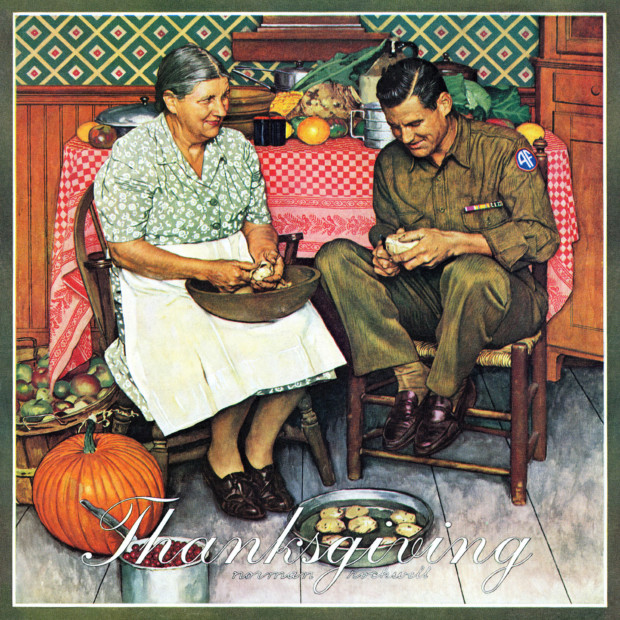





This painting appeared as a cover for The Saturday Evening Post on November 24, 1945, two months after the end of World War II. Rockwell painted this picture using real models—Dick Haagelberg and his mother Saara, from Arlington, Vermont. Haagelberg was Rockwell’s milkman and had just recently returned from the front. Unfortunately, the Haagelbergs were not too thrilled at the results. It looks like Norman Rockwell embellished Mrs. Haagelberg’s appearance, adding a few pounds, and a few years too. Still, the painting remains a Rockwell classic, reminding us that there is always something to be grateful for, and that there is always calm after the storm.
Wiking shared the results of a survey where 57% of Danes indicated that the optimal number for having a hyggelig time is 3-4 people. Science is split on whether it is better to have fewer close friends or a wide circle of acquaintances, though everyone agrees that relationships greatly influence one’s level of happiness. Whatever the optimal number is for you, letting good will and harmony permeate your relationships is always a good idea.
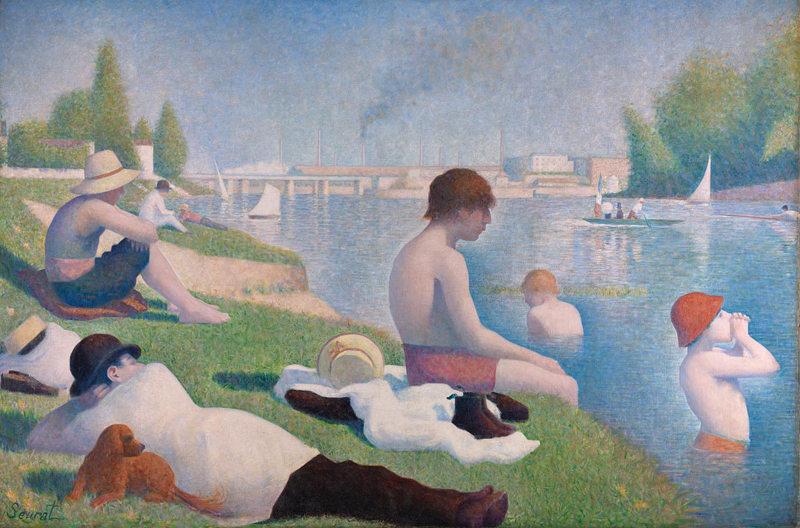





Georges Seurat completed this painting when he was only 24 years old. He applied to the jury of the Salon that same year, but the salon rejected it. In this canvas, Seurat gives us the heat of a Parisian afternoon. The harmony of colors produces a very pleasant effect, but we also observe harmony of the bathers with nature, and in a way with each other, each minding his own business undisturbed. Even though Seurat’s contemporaries did not appreciate this painting, today it is considered one of the highlights of the National Gallery.
If you’ve ever suffered through shoes that are too tight, a sweater that itches, or maybe a pillow that is too soft, you’ll know that comfort is paramount to a feeling of well-being. Hygge emphasizes this aspect, coupled with relaxation.
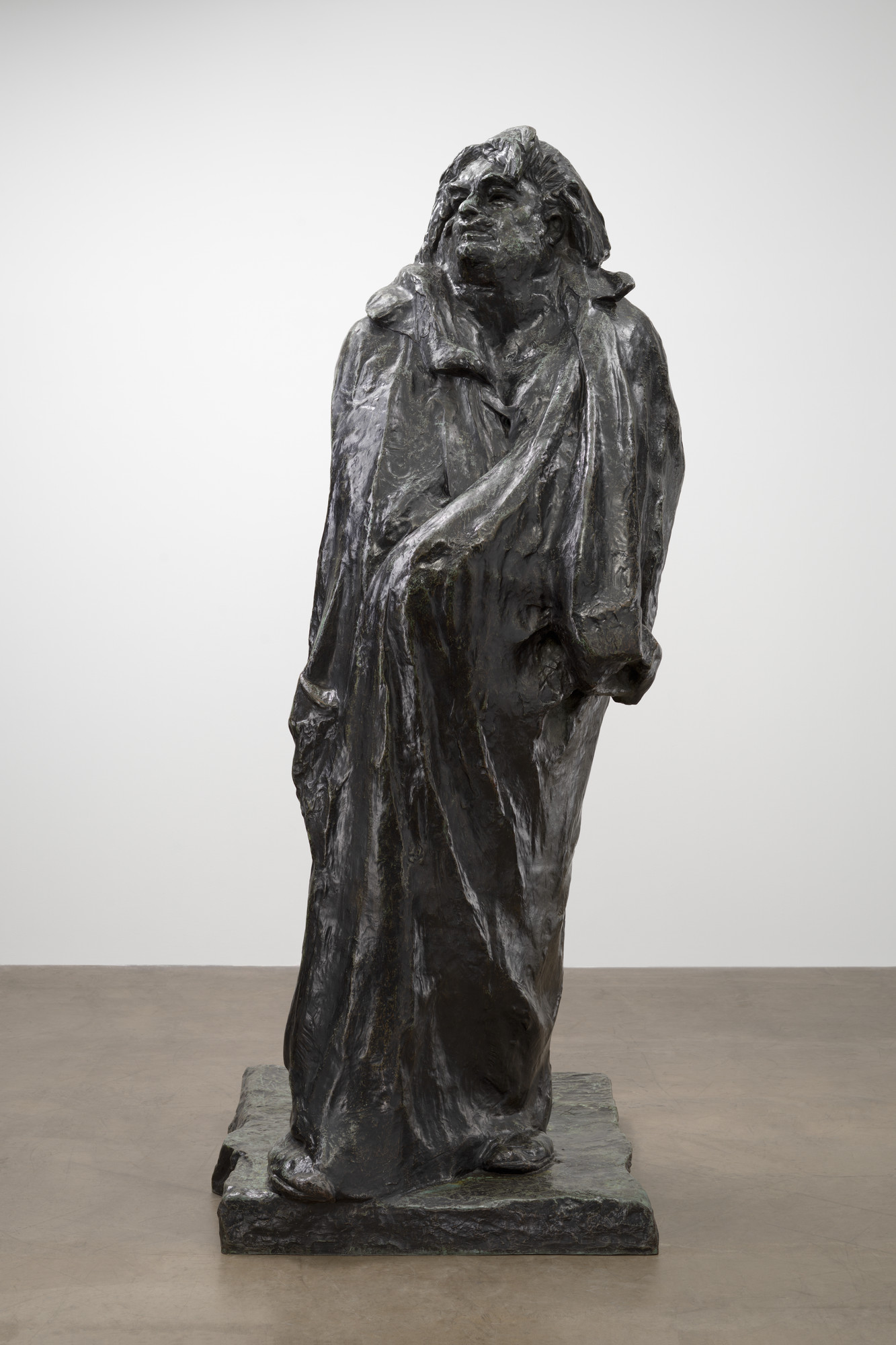
Auguste Rodin worked for seven years to produce this image of Honoré Balzac, the giant of French literature. He was so serious about his research, that he went so far as to read all of Balzac’s works, and that is saying a lot. Balzac’s Comédie Humaine alone is a collection of 90 novels and short stories! He traveled to the region of Touraine, where Balzac was born. There, he studied body types to create sketches and clay models. He acquired clothes made by Balzac’s tailor. The greatest difficulty was creating a good depiction that represented Balzac’s genius and status, but that stayed true to him and his personality.
After all the effort, Rodin decided to portray Balzac at the moment of creation, wearing the cloak that he always wore when he wrote. The statute caused such an outrage that the commission was canceled. Poor Rodin never saw the monument cast in bronze. But, with such a prolific career, Balzac makes a case for the relationship between comfort and creativity.
This aspect has a lot to do with harmony. It is not hyggelig to argue. Hygge is all about creating a feeling of contentment, and a lot of drama is not conducive to that aim. A good art example of this is the friendship between Monet and Renoir.
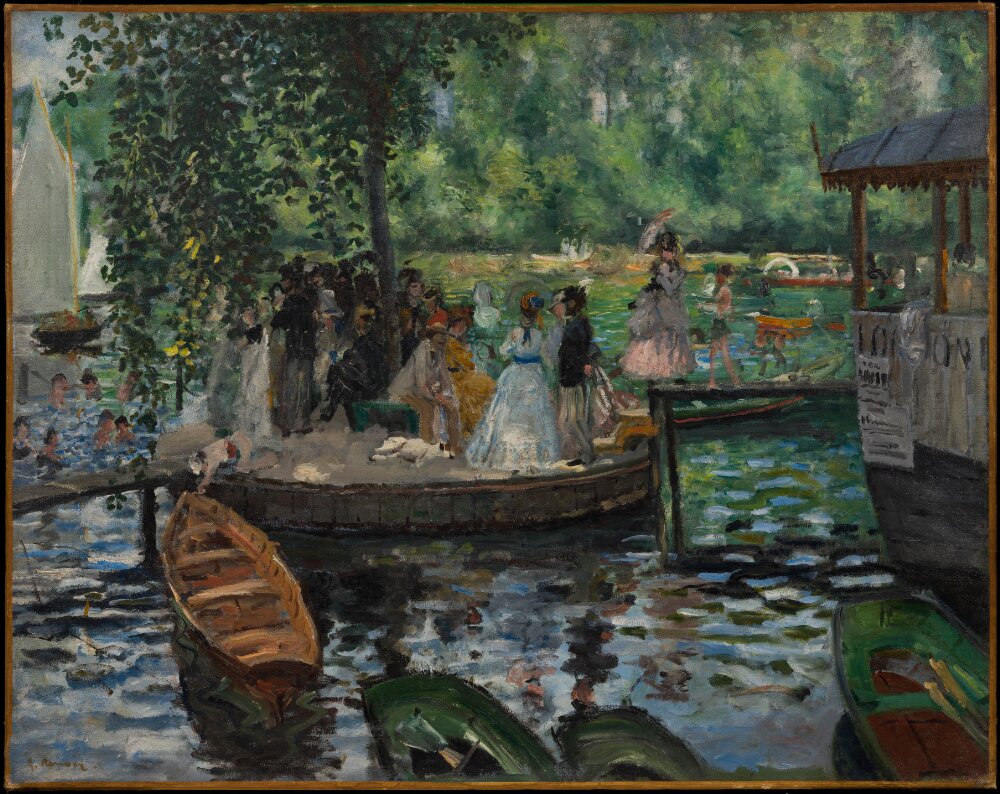





Renoir and Monet are both considered masters of Impressionism, and their stories have a lot in common. Both were impoverished artists, struggling to make ends meet, very passionate about their art, and trying to get acceptance into the Salons. And, they often found themselves in the French countryside, painting the same scenes! La Grenouillère is a fantastic example of this. Both Renoir and Monet painted their own versions in their own unique style (for Monet’s version, go here). They could have competed against each other. But, instead of nurturing a rivalry, they nurtured a friendship that profited themselves and the art world at large.
Wiking says that in all his years of researching happiness, he has found that the best predictor of happiness are our social relationships. Our bodies, even, have mechanisms that enhance our ability for closeness, such as the hormone oxytocin. Physical touch prompts the release of oxytocin, making us feel happy, and reducing stress, pain, and anxiety. Studies have shown that cuddling pets have the same effect s of cuddling people! The idea is to create situations where we can feel happy, calm, and safe.
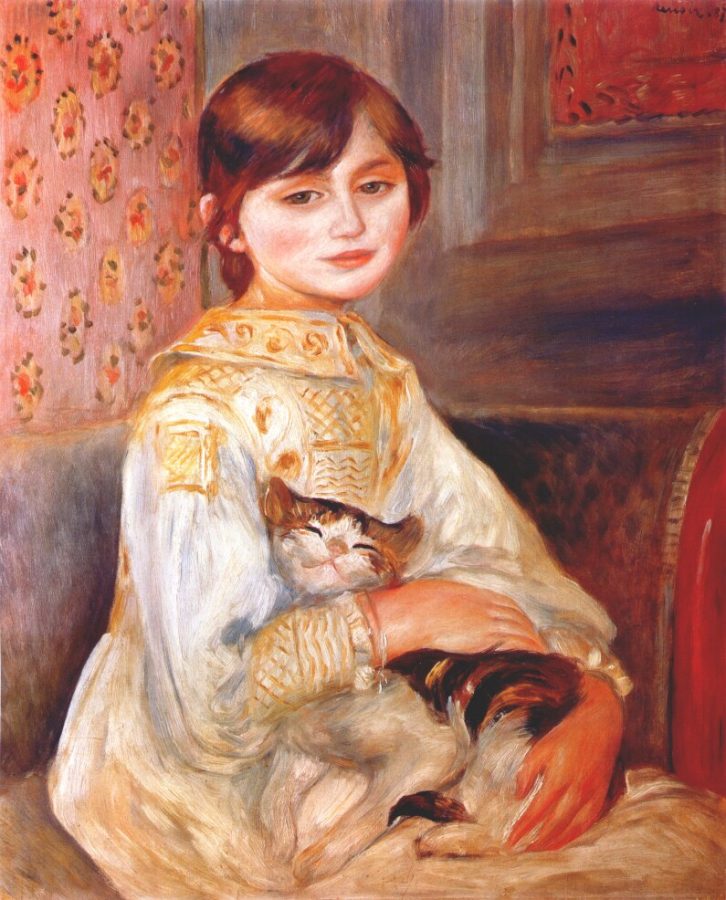





The subject of this portrait is Édouard Manet’s niece—Julie, the daughter of his brother, Eugène, and the artist Berthe Morisot. At this point, the Manets had known Renoir for years, and their friendship led to this commission. Julie herself later recalled that she remembered sitting for Renoir as he worked on the portrait in small sections, which was not his usual way. On a funny side note, Julie also recalls that, even though she did think it a good likeness, when they showed the portrait to Degas he was not impressed.
Right now, it is a little hard to be too together, but you can try to glean the benefits of togetherness if you have a pet. Or, thanks to technology, you can still keep in touch and see those you love as often as time permits. The Happiness Research Institute released a report, Well Being in the Age of Covid, with ideas on how to cope during this challenging time.
Home is where the heart is! Wiking mentions several things that will create a hyggelig home, such as candles, things made out of wood, books, ceramics, a special chair, blankets, cushions… What you are looking for is to cultivate that cozy feeling that makes you want to stay inside, cuddled, and warm.
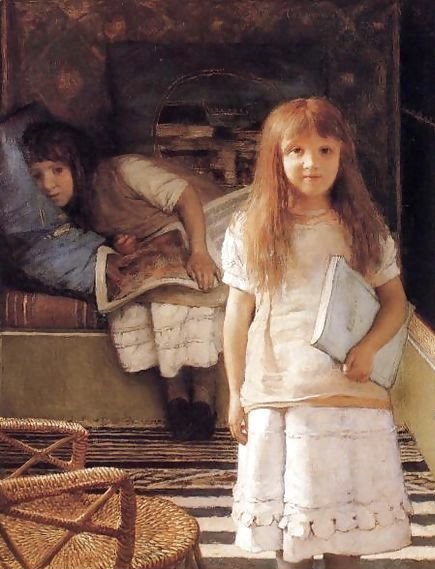





This Is Our Corner is a portrait of the artists’ two daughters, Anna and Laurence, posing in one of the rooms in Townsend House, the family’s London residence. No wonder the girls claimed it as their corner! It’s full of hyggelig objects and textures.
Wiking closes The Little Book of Hygge with a quote by Benjamin Franklin,
Happiness consists more in the small conveniences of pleasures that occur every day, than in great pieces of good fortune that happen but seldom…
Benjamin Franklin
Everyday living can be challenging, particularly after these very unusual pandemic years. Hopefully, you have found some practices you can incorporate to boost your happiness and your sense of well-being. Hygge is particularly suited to difficult times, because it emphasizes the search for that cozy feeling of being safe at home, and encourages us to recreate it in everything we do.
DailyArt Magazine needs your support. Every contribution, however big or small, is very valuable for our future. Thanks to it, we will be able to sustain and grow the Magazine. Thank you for your help!